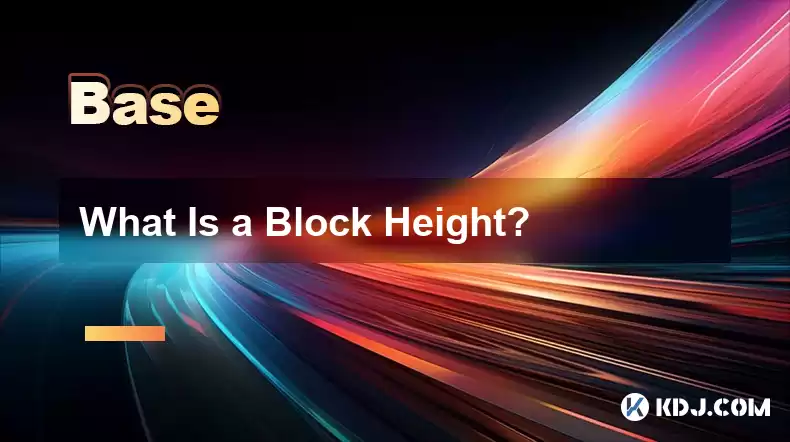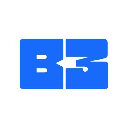-
 Bitcoin
Bitcoin $115000
0.12% -
 Ethereum
Ethereum $3701
4.50% -
 XRP
XRP $3.081
2.99% -
 Tether USDt
Tether USDt $0.0000
-0.01% -
 BNB
BNB $767.9
1.45% -
 Solana
Solana $169.5
3.13% -
 USDC
USDC $0.9999
0.01% -
 Dogecoin
Dogecoin $0.2106
4.30% -
 TRON
TRON $0.3334
1.62% -
 Cardano
Cardano $0.7564
2.54% -
 Stellar
Stellar $0.4165
0.76% -
 Hyperliquid
Hyperliquid $38.75
0.25% -
 Sui
Sui $3.593
3.00% -
 Chainlink
Chainlink $17.08
3.59% -
 Bitcoin Cash
Bitcoin Cash $573.6
4.35% -
 Hedera
Hedera $0.2508
-0.84% -
 Avalanche
Avalanche $23.07
6.46% -
 Ethena USDe
Ethena USDe $1.001
-0.02% -
 Litecoin
Litecoin $120.8
8.17% -
 UNUS SED LEO
UNUS SED LEO $8.943
-0.32% -
 Toncoin
Toncoin $3.400
-5.60% -
 Shiba Inu
Shiba Inu $0.00001255
1.54% -
 Uniswap
Uniswap $9.908
6.32% -
 Polkadot
Polkadot $3.718
2.10% -
 Monero
Monero $303.0
-0.74% -
 Dai
Dai $0.9999
-0.02% -
 Bitget Token
Bitget Token $4.392
0.91% -
 Cronos
Cronos $0.1403
6.31% -
 Pepe
Pepe $0.00001076
1.13% -
 Aave
Aave $267.2
1.80%
What Is a Block Height?
Block height, a numerical value representing a block's position in a blockchain, plays a crucial role in ordering transactions, validating chain integrity, and facilitating consensus mechanisms.
Dec 13, 2024 at 01:28 am

What Is a Block Height?
A block height is a numerical value that represents the position of a block within a blockchain. It indicates the order in which the block was added to the chain, with higher block heights corresponding to more recent blocks. Understanding block height is crucial for comprehending the structure and dynamics of a blockchain network.
Significance of Block Height
Block height plays a vital role in several aspects of blockchain operations:
- Ordering of Transactions: Blocks are added to the blockchain in a sequential manner, and their height determines the chronological order of the transactions they contain. Transactions in blocks with higher heights are considered more recent and have higher chances of being confirmed.
- Chain Validation: Block height is used to validate the integrity of the blockchain. Each block contains a reference to the previous block, forming a chain-like structure. By verifying the block height sequence, nodes can ensure that the blockchain is intact and has not been tampered with.
- Consensus Mechanisms: Block height is central to consensus mechanisms used by blockchains to reach agreement on the validity of transactions. For example, in Proof-of-Work (PoW) blockchains, miners compete to solve complex mathematical puzzles to create new blocks. The miner who successfully solves the puzzle adds the next block to the chain, increasing its height.
How Block Height Is Determined
The block height of a new block is determined by the following factors:
- Parent Block: Each block references the previous block in the chain, known as its parent block. The height of the parent block is incremented by one to determine the height of the new block.
- Consensus Rules: The consensus mechanism of the blockchain defines the specific rules for determining which block is added to the chain and becomes the new block at a given height. For instance, in PoW blockchains, the block with the highest difficulty level and valid nonce becomes the new block at a particular height.
Block Height vs. Block Number
While the terms "block height" and "block number" are often used interchangeably, they represent slightly different concepts:
- Block Height: Represents the position of a block within the blockchain, with higher heights indicating more recent blocks.
- Block Number: Primarily refers to the numerical identifier assigned to a block when it is created. It is often used in contexts where the sequential order of blocks is not critical, such as indexing or querying data.
Practical Applications of Block Height
Block height has various practical applications in the blockchain ecosystem:
- Transaction Confirmation: The block height of a transaction indicates its confirmation status. Transactions in blocks with higher heights have more confirmations and are considered more secure.
- Block Exploration: Blockchain explorers, such as Etherscan or Blockchair, allow users to search for blocks based on their height. This enables developers and users to track the progress of transactions and analyze blockchain activity.
- Blockchain Analytics: Block height data can be used for blockchain analytics, such as tracking transaction volume, identifying forks, and measuring network efficiency.
Disclaimer:info@kdj.com
The information provided is not trading advice. kdj.com does not assume any responsibility for any investments made based on the information provided in this article. Cryptocurrencies are highly volatile and it is highly recommended that you invest with caution after thorough research!
If you believe that the content used on this website infringes your copyright, please contact us immediately (info@kdj.com) and we will delete it promptly.
- Velo Universe, DEX, and DeFi Security: Navigating the Future of Decentralized Trading
- 2025-08-05 09:25:13
- Bitget Wallet Revolutionizes Solana with Gas-Free Transactions: A New Era for DeFi
- 2025-08-05 09:25:13
- Ozak AI, Crypto Boom, and ROI Potential: Is This the Next Big Thing?
- 2025-08-05 09:25:24
- Solana's ETF Hopes & the All-Time High Chase: Is SOL Set to Soar?
- 2025-08-05 09:25:24
- Coinbase's Brian Armstrong and the Art of Focused Work: A Deep Dive
- 2025-08-05 09:25:30
- Uniswap Price Prediction: Bullish Reversal on the Horizon?
- 2025-08-05 09:25:30
Related knowledge

What is the difference between CeFi and DeFi?
Jul 22,2025 at 12:28am
Understanding CeFi and DeFiIn the world of cryptocurrency, CeFi (Centralized Finance) and DeFi (Decentralized Finance) represent two distinct financia...

How to qualify for potential crypto airdrops?
Jul 23,2025 at 06:49am
Understanding What Crypto Airdrops AreCrypto airdrops refer to the distribution of free tokens or coins to a large number of wallet addresses, often u...

What is a crypto "airdrop farmer"?
Jul 24,2025 at 10:22pm
Understanding the Role of a Crypto 'Airdrop Farmer'A crypto 'airdrop farmer' refers to an individual who actively participates in cryptocurrency airdr...

What is the difference between a sidechain and a Layer 2?
Jul 20,2025 at 11:35pm
Understanding the Concept of SidechainsA sidechain is a separate blockchain that runs parallel to the main blockchain, typically the mainnet of a cryp...

What is the Inter-Blockchain Communication Protocol (IBC)?
Jul 19,2025 at 10:43am
Understanding the Inter-Blockchain Communication Protocol (IBC)The Inter-Blockchain Communication Protocol (IBC) is a cross-chain communication protoc...

How does sharding improve scalability?
Jul 20,2025 at 01:21am
Understanding Sharding in BlockchainSharding is a database partitioning technique that is increasingly being adopted in blockchain technology to enhan...

What is the difference between CeFi and DeFi?
Jul 22,2025 at 12:28am
Understanding CeFi and DeFiIn the world of cryptocurrency, CeFi (Centralized Finance) and DeFi (Decentralized Finance) represent two distinct financia...

How to qualify for potential crypto airdrops?
Jul 23,2025 at 06:49am
Understanding What Crypto Airdrops AreCrypto airdrops refer to the distribution of free tokens or coins to a large number of wallet addresses, often u...

What is a crypto "airdrop farmer"?
Jul 24,2025 at 10:22pm
Understanding the Role of a Crypto 'Airdrop Farmer'A crypto 'airdrop farmer' refers to an individual who actively participates in cryptocurrency airdr...

What is the difference between a sidechain and a Layer 2?
Jul 20,2025 at 11:35pm
Understanding the Concept of SidechainsA sidechain is a separate blockchain that runs parallel to the main blockchain, typically the mainnet of a cryp...

What is the Inter-Blockchain Communication Protocol (IBC)?
Jul 19,2025 at 10:43am
Understanding the Inter-Blockchain Communication Protocol (IBC)The Inter-Blockchain Communication Protocol (IBC) is a cross-chain communication protoc...

How does sharding improve scalability?
Jul 20,2025 at 01:21am
Understanding Sharding in BlockchainSharding is a database partitioning technique that is increasingly being adopted in blockchain technology to enhan...
See all articles

























































































